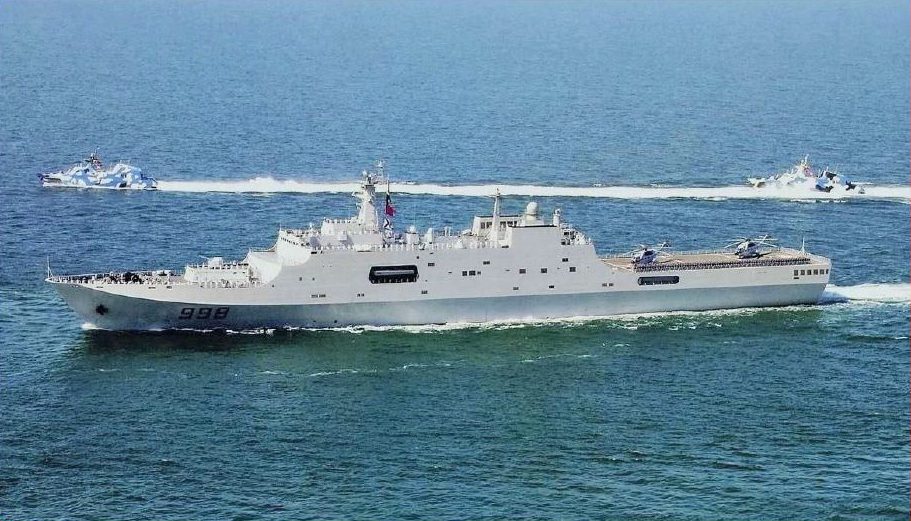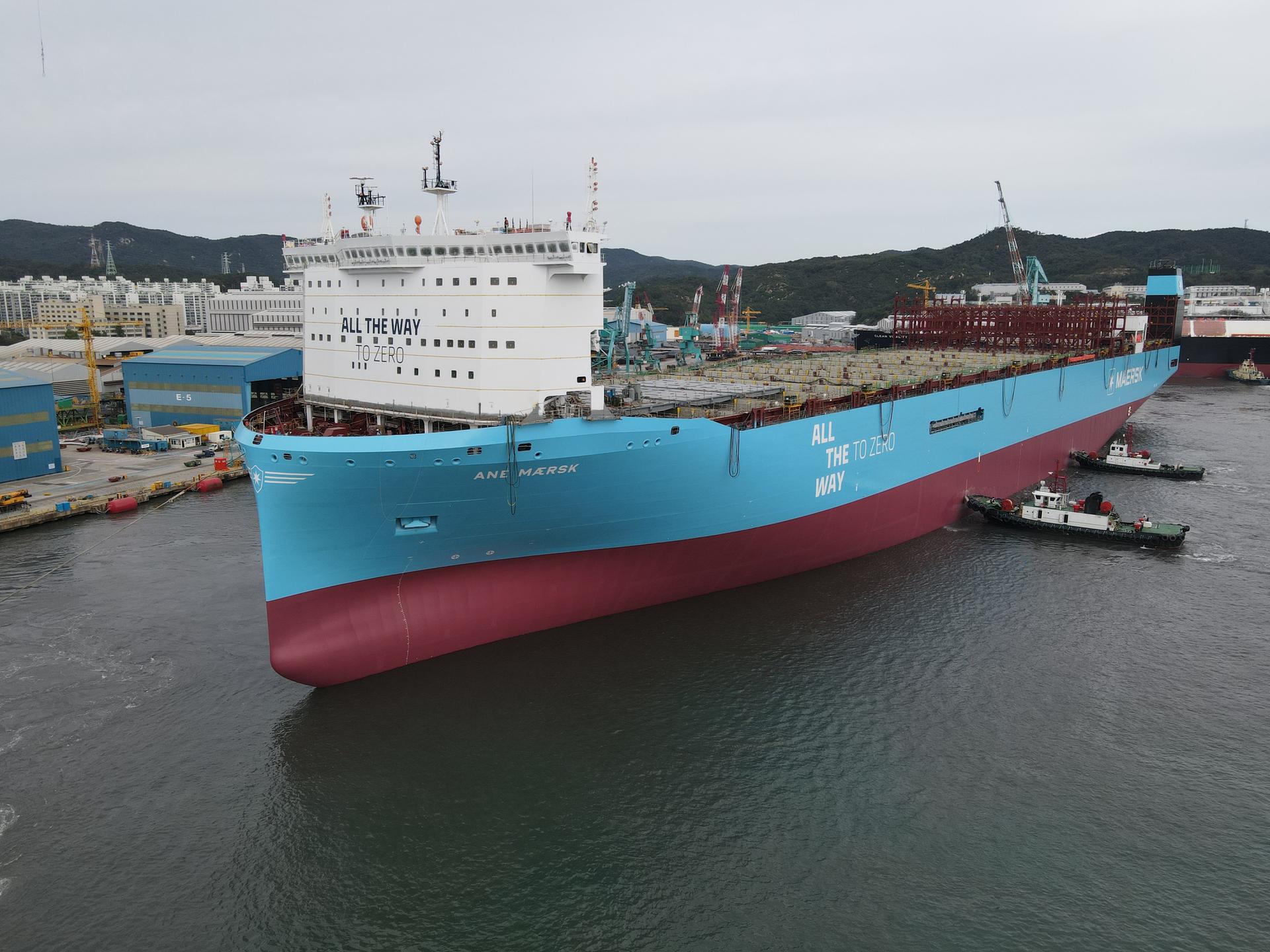The Kunlun Shan (998) is one Chinese navy ship aiding in the search for flight MH370.
March 28 (Bloomberg) — China, in the midst of a military buildup challenging the U.S. and Japan, is showcasing its expanded capabilities in the search for Malaysia’s missing plane by deploying hardware from satellites to warships to an icebreaker.
With pictures of gray-hulled naval vessels and planes operating in seas thousands of miles from Chinese shores, state media has hailed the hunt for Malaysia Air Flight MH370 as the country’s “strongest-ever search and rescue.” China, which had a majority of the passengers on the Beijing-bound flight, says it has sent at least 13 ships to the search zone in the Indian Ocean.
That ranks as the largest naval deployment outside its waters in modern history, according to Gary Li, a senior analyst for IHS Maritime in Beijing. The deployment plays well at home, where President Xi Jinping has vowed to make China a combat- ready maritime power and is being assertive in territorial disputes with neighbors including Japan and the Philippines.
“It’s an enormously valuable training exercise for them, it’s not something they’ve ever done before,” Steve Tsang, director of the China Policy Institute at the University of Nottingham in England, said. “It means the Chinese can deploy ships at quite considerable distance away from home operating in difficult conditions.”
The March 8 disappearance of the Malaysian Airline System Bhd. aircraft with 239 people on board, 154 of them Chinese nationals, has given China a chance to demonstrate its effectiveness and capacity relative to smaller Southeast Asian neighbors.
Satellite Images
As Malaysia has struggled over two weeks to map out the airplane’s last route, China has used its satellites to spot debris in the southern Indian Ocean that may be linked to the jet, including an object 22 meters by 13 meters detected in images taken March 18.
Two Chinese IL-76 transport planes were dispatched to Perth as the focus of the search moved to an area off Australia’s west coast. On March 24, Chinese aircraft scouring the ocean spotted and photographed two “relatively big” objects surrounded by smaller ones floating in the water.
Three Chinese naval vessels have searched for suspected debris off the coast of Australia, Geng Yansheng, a spokesman at the Ministry of Defense said yesterday in a statement on its website. They are the missile destroyer Haikou, the supply ship Qiandaohu and the amphibious transport ship Kunlunshan, according to the official Xinhua News Agency. The military has also redirected more than 10 satellites to carry out surveillance in the Indian Ocean, Geng said.
Ocean Search
Three escort vessels earlier deployed in the Gulf of Aden are also searching in the eastern part of the southern Indian Ocean, Foreign Ministry spokesman Hong Lei said March 26. The icebreaker Xue Long, which in January helped evacuate 52 people from a Russian ship trapped off Antarctica, also arrived March 26 to search for debris.
“The demonstration of how much the Chinese are able to be part of it shows how confident and capable China now is just compared to a few years ago,” Tsang said.
While China has been involved in escort missions off the piracy-plagued coast of Somalia since 2008, it has little experience of far-flung operations. In early 2011, it rescued more than 35,000 citizens from Libya, its largest overseas evacuation since the Communists came to power in 1949, according to Xinhua.
“We believe the Chinese government are doing their best, sending planes, sending people,” Xu Liping, senior fellow at the National Institute of International Strategy at the Chinese Academy of Social Sciences in Beijing, said.
Malaysia Contrast
China has contrasted its response with that of Malaysia, which has been criticized for delays and flaws in its efforts to find the missing plane. Foreign Ministry officials have urged Malaysia to step up search efforts and better coordinate the operation, while state media has questioned the competence of Malaysian authorities.
Still, China has also turned up false leads. Chinese satellite images posted on March 12 showed floating objects near the confluence of the South China Sea and Gulf of Thailand that led to a search in that area. They panned out not to be from the plane.
While China has thrown a lot of resources into the search, the effort has also shown its limitations, according to Roderic Wye, an associate fellow of the Asia program at London-based policy group Chatham House.
“It shows that China has capabilities but not necessarily excellent ones,” he said. Even so, the country’s leaders have succeeded in winning positive public opinion at home, Wye said.
Embassy Protest
On March 25, a day after Malaysia’s prime minister said flight MH730 ended in the Southern Indian Ocean, Chinese police watched over relatives as they protested at the Malaysian embassy before they were bused back to their hotel. A day later, international media were let into a meeting where families berated Malaysian military officials trying to explain an analysis of satellite data from the U.K.
“If the Chinese government didn’t let them go to the embassy to protest they will use some other means,” said Xu. “For China, domestic policies are number one.”
China’s controlled media means different voices are not heard, allowing China to deflect anger and frustration toward Malaysia, Bo Zhiyue, senior research fellow at the National University of Singapore, said in a telephone interview. This has been helped by the perception that the country is a victim, he said.
“China is taking advantage of this incident to say to its own people, ‘Actually by comparison you are lucky by having us as your leaders instead of those guys over there,’” Bo said.
Copyright 2014 Bloomberg.

 Join The Club
Join The Club











